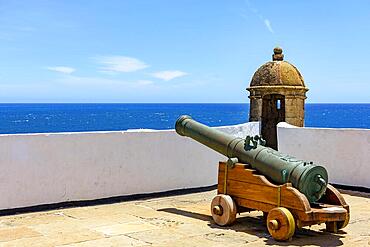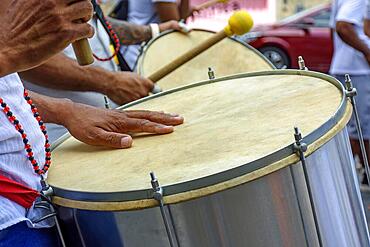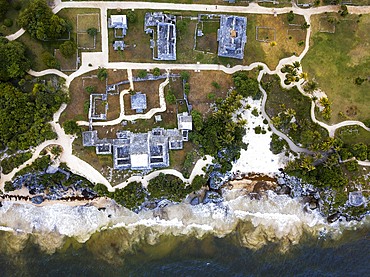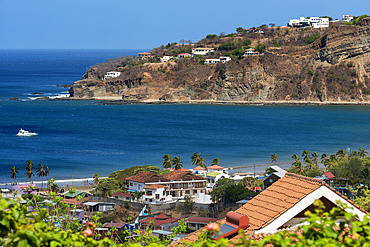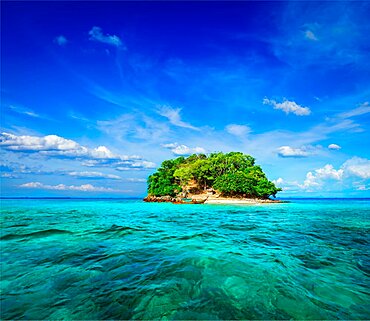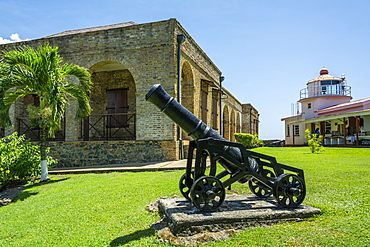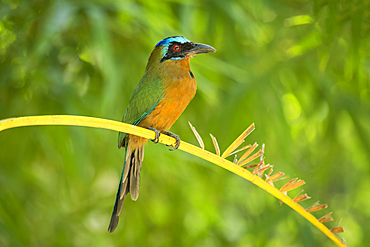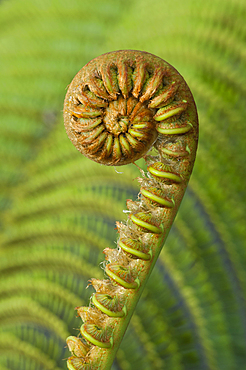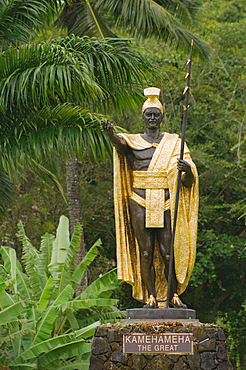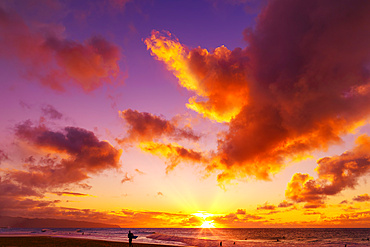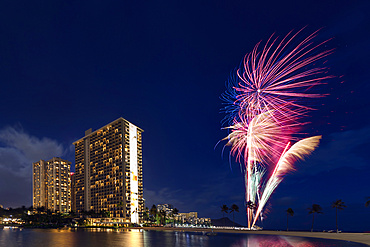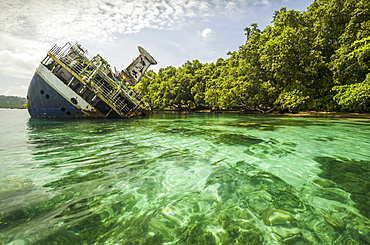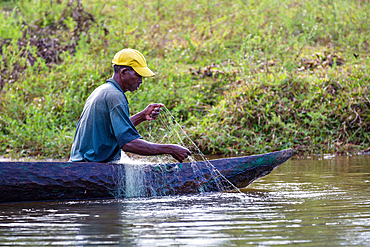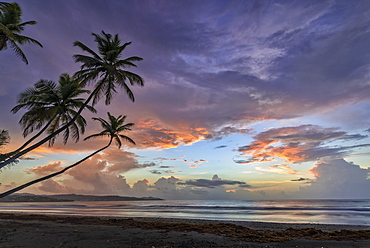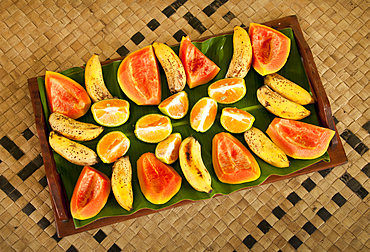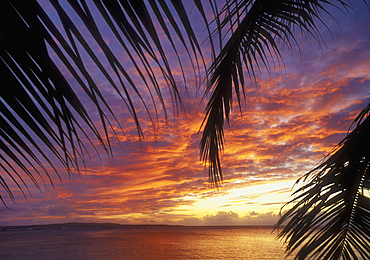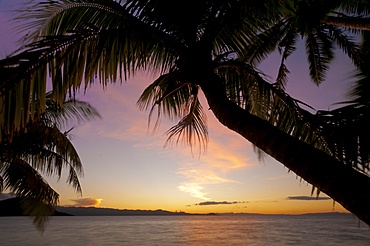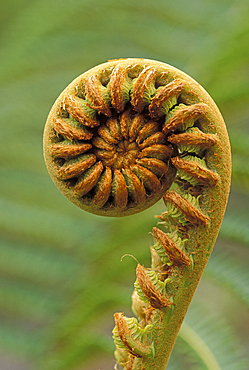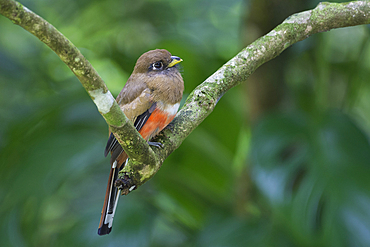Recent searches
Loading...
832-400193 - Famous Itapua beach in Salvador with city buildings and horizon in the background, Brasil
832-400191 - Old historic fort and colonial guardhouse with cannon pointed to the sea in the city of Salvador in Bahia, Brasil
832-400186 - Drummer playing his instrument during carnival celebrations in the streets of Brazil, Brasil
1350-6597 - Aerial views of El Castillo and the Ruins of the Mayan temple grounds at Tulum, Quintana Roo, Yucatan, Mexico. Tulum is the site of a pre-Columbian Mayan walled city which served as a major port for Coba, in the Mexican state of Quintana Roo. The ruins are situated on 12 meter 39 ft tall cliffs along the east coast of the Yucatán Peninsula on the Caribbean Sea in the state of Quintana Roo, Mexico. Tulum was one of the last cities built and inhabited by the Maya; it was at its height between the 13th and 15th centuries and managed to survive about 70 years after the Spanish began occupying Mexico. Old World diseases brought by the Spanish settlers appear to have resulted in very high fatalities, disrupting the society, and eventually causing the city to be abandoned.
1350-6599 - Aerial views of El Castillo and the Ruins of the Mayan temple grounds at Tulum, Quintana Roo, Yucatan, Mexico. Tulum is the site of a pre-Columbian Mayan walled city which served as a major port for Coba, in the Mexican state of Quintana Roo. The ruins are situated on 12 meter 39 ft tall cliffs along the east coast of the Yucatán Peninsula on the Caribbean Sea in the state of Quintana Roo, Mexico. Tulum was one of the last cities built and inhabited by the Maya; it was at its height between the 13th and 15th centuries and managed to survive about 70 years after the Spanish began occupying Mexico. Old World diseases brought by the Spanish settlers appear to have resulted in very high fatalities, disrupting the society, and eventually causing the city to be abandoned.
1350-6678 - Strawberry Poison Frog (Dendrobates pumilio), adult, Bastimentos National Park, Bocas del Toro, Panama. The strawberry poison frog or strawberry poison-dart frog (Oophaga pumilio or Dendrobates pumilio) is a species of small amphibian poison dart frog found in Central America. It is common throughout its range, which extends from eastern central Nicaragua through Costa Rica and northwestern Panama. The species is often found in humid lowlands and premontane forest, but large populations are also found in disturbed areas such as plantations. The strawberry poison frog is perhaps most famous for its widespread variation in coloration, comprising approximately 15���30 color morphs, most of which are presumed to be true-breeding. O. pumilio, while not the most poisonous of the dendrobatids, is the most toxic member of its genus. The species is most diverse in Panama with varieties in vivid shades of all red, orange, blue, yellow or green, green and yellow, white with red, orange or black and spotted varieties. The most colorful mix is found in Isla Bastimentos Marine National Park though not all in one place. Colors vary by location. A beach on the north side of the island is named after the species. Two of Southern Explorations' Panama tours visit red frog habitat. Both the eight-day Panama Adventure trip and eleven-day Panama Highlights trip spend time in Isla Bastimentos Marine National Park and the former also goes to Red Frog Beach.
The red frog is not as poisonous as some of its cousins and is not a threat to humans. It subsists on a diet of ants that dine on poisonous plants, providing the red frog its protective skin toxin. Males attract females with a loud quick chirp. To hear the distinctive sound before you depart on your Panama tours, go to the University of Michigan Museum's biodiversity website (www.animaldiversity.ummz.umich.edu.) After birth, the tadpoles climb aboard the mother who deposits them in different protected areas where she retu
1350-6610 - San Juan del Sur coastal beaches near the central town San Juan del Sur Nicaragua Central America Luxury villas in Playa San Juan del Sur
832-397717 - Vacation holidays adventure concept background, tropical island and long-tail boat with snorkeling set. Thailand
832-397716 - Vacation holidays concept background, tropical island and long-tail boat in sea. Thailand
832-397072 - Snorkeling set on boat heading to tropical island in Thailand
860-290809 - Symbolic panel during the crossing of the Tropic of Capricorn, Namibia
1350-6353 - Historic Fort King George on Tobago island, Trinidad and Tobago.
1350-6306 - Coconut palm trees at sunset; Pu'uhonua O Honaunau National Historical Park, South Kona, Island of Hawaii.
1350-6313 - Trinidad Motmot, aka blue-crowned motmot; Arnos Vale region of Tobago island, Trinidad and Tobago.
1350-6368 - 'Ama'uma'u fern frond; Hawaii Volcanoes National Park, Island of Hawaii.
1350-6371 - Waves breaking in Pololu Bay; North Kohala, Big Island of Hawaii.
1350-6357 - Woman walking on beach at Magdalena Grand Beach Resort on the island of Tobago; Trinidad and Tobago.
1350-6301 - Bird of Paradise blossom (Strelitzia reginae); Hawaii.
1350-6345 - Woman walking on the beach at sunrise at Magdalena Grand Beach Resort on Tobago island, Trinidad and Tobago.
1350-6348 - Sunset at Poipu Beach Park with palm tree and swimming cove; Poipu, Kauai, Hawaii.
1350-6333 - Statue of King Kamehameha I in Wailoa State Park, Hilo, Island of Hawaii.
1350-6347 - Red Ti leaves; National Tropical Botanical Garden - McBryde Garden, Lawai, Kauai, Hawaii.
1350-6324 - Red ti plant leaves at Matangi Private Island Resort in Fiji.
1350-6325 - Akaka Falls in Akaka Falls State Park, Hamakua Coast, Island of Hawaii.
1350-6304 - Lava from Pu'u O'o eruption entering the ocean; Hawaii Volcanoes National Park, Island of Hawaii.
1350-6359 - Castara Bay on the north coast of Tobago island, Trinidad and Tobago.
1116-50811 - Sunrise at Kahala Beach, Waiʻalae Beach Park, with a flare around the sun in a glowing red sky reflected in the tranquil water; Oahu, Hawaii, United States of America
1116-51115 - A couple stands kissing on Lanakai beach on the Hawaiian island of Oahu at sunset; Lanakai, Oahu, Hawaii, United States of America
1116-50810 - Sunrise viewed from Lanikai Beach with a view of the Mokulua Islands off the coast; Oahu, Hawaii, United States of America
1116-51102 - A group of Japanese students on vacation at Lanakai Beach with the Mokes Islands in the background: Oahu, Hawaii, United States of America
1116-51101 - A group of Japanese students on vacation at Lanakai Beach with the Mokes Islands in the background: Oahu, Hawaii, United States of America
1116-51073 - Long exposure of a moat and fort in the distance; Mandalay, Mandalay, Burma
1116-52239 - A view from behind of a Millennial couple walking along Lanikai Beach with Mokapu Point in the background; Lanikai, Oahu, Hawaii, USA
1116-51892 - Hawaiian Green sea turtle (Chelonia mydas) swimming over the coral on the sea floor; Maui, Hawaii, United States of America
1116-50807 - Surf on the golden sand at Waimea Bay Beach Park at sunrise; Oahu, Hawaii, United States of America
1116-52235 - Millennial couple kissing on Lanikai Beach with the Mokes Islands in the background; Lanikai, Oahu, Hawaii, USA
1116-51884 - Close-up of a blue goatfish (Parupeneus cyclostomus) showing the two barbels tucked under the chin, used to probe and detect prey; Maui, Hawaii, United States of America
1116-50805 - Mist over Kaupo Cove at sunrise, with a pier leading to a house and mountain peaks lining the coastline; Oahu, Hawaii, United States of America
1116-51891 - Hawaiian Green sea turtle (Chelonia mydas) swimming close to the surface with sunburst; Maui, Hawaii, United States of America
1116-50803 - The golden sand and surf on Lanikai Beach with a view of the Mokulua Islands off the coast; Oahu, Hawaii, United States of America
1116-51076 - A couple stands kissing on Lanakai beach on the Hawaiian island of Oahu at sunset; Lanakai, Oahu, Hawaii, United States of America
1116-50809 - Condominiums along the coastline of Waikiki at sunrise; Honolulu, Oahu, Hawaii, United States of America
1116-51103 - A group of Japanese students on vacation at Lanakai Beach with the Mokes Islands in the background: Oahu, Hawaii, United States of America
1116-52236 - Millennial couple kissing on Lanikai Beach with the Mokes Islands in the background; Lanikai, Oahu, Hawaii, USA
1116-52237 - A young Millennial couple looking at a smart phone on Lanakai Beach with the Mokes Islands in the background; Lanakai, Oahu, Hawaii, USA
1116-50802 - Lanikai Beach and kayaks on the white sand; Oahu, Hawaii, United States of America
1116-52234 - Millennial couple kissing on Lanikai Beach with the Mokes Islands in the background; Lanikai, Oahu, Hawaii, USA
1116-51885 - Close-up of the orange colored plumes of a Christmas tree worm (Spirobranchus giganteus) attached to coral; Maui, Hawaii, United States of America
1116-52238 - A Millennial couple walking along Lanikai Beach with Mokapu Point and the Moku Manu Islands in the background; Lanikai, Oahu, Hawaii, USA
1116-51960 - Woman wearing sunhat sitting by a swimming pool reading at the Gabus Game Ranch; Otavi, Otjozondjupa, Namibia
1116-52233 - Close-up of millennial couple kissing on Lanikai Beach; Lanikai, Oahu, Hawaii, USA
1116-51959 - Woman wearing sunhat sitting by a swimming pool dangling feet in the water and smiling at the camera at the Gabus Game Ranch; Otavi, Otjozondjupa, Namibia
1116-51112 - A young woman stands on Sandy Beach, Oahu, with a skimboard, looking out at the waves; Oahu, Hawaii, United States of America
1116-51116 - A couple walks on Lanakai beach on the Hawaiian island of Oahu at sunset; Lanakai, Oahu, Hawaii, United States of America
1116-51114 - A couple walks on Lanakai beach on the Hawaiian island of Oahu at sunset; Lanakai, Oahu, Hawaii, United States of America
1116-51100 - A group of Japanese students on vacation at Lanakai Beach with the Mokes Islands in the background: Oahu, Hawaii, United States of America
1116-50804 - Silhouette of a surfer standing on Kelki Beach at the water's edge with dramatic glowing clouds above at sunset; Oahu, Hawaii, United States of America
1116-50796 - Condominiums and fireworkds along the coastline of Waikiki at sunset; Honolulu, Oahu, Hawaii, United States of America
1116-50806 - Sunrise at Kahala Beach, Waiʻalae Beach Park, with rays of the sun in a glowing sky reflected in the tranquil water; Oahu, Hawaii, United States of America
1116-51117 - A couple walks on Lanakai beach on the Hawaiian island of Oahu at sunset; Lanakai, Oahu, Hawaii, United States of America
1116-51111 - A young woman stands on Sandy Beach, Oahu, with a skimboard; Oahu, Hawaii, United States of America
1116-51041 - Shipwrecked World Discoverer cruise in tropical waters of the Solomon Islands, Roderick Bay; Nggela Islands, Solomon Islands
1116-51072 - Long exposure of an Australian beach with mountain backdrop, Four Mile Beach; Port Douglas, Queensland, Australia
1116-50808 - Condominiums and palm trees along the coastline of Waikiki at sunrise; Honolulu, Oahu, Hawaii, United States of America
1113-105650 - Fisherman in dugout canoe, Pangalanes Canal, Canal de Pangalanes, Eastern Madagascar, Africa
1350-3027 - Historic Fort King George on Tobago island, Trinidad and Tobago.
1350-3190 - Village elder in her bure; Navala Village, Viti Levu Island, Fiji.
1350-3198 - Inosi Navoto with warrior club greeting visitors to Lawai Pottery Village on Viti Levu Island, Fiji.
1350-3024 - Fishing net and boats on the beach at Maracas Bay, Trinidad island, Trinidad and Tobago.
1350-3021 - Sunrise at Magdalena Grand Beach Resort on Tobago Island, Trinidad and Tobago.
1350-3031 - Beach and coconut palm trees at Pigeon Point Heritage Park on Tobago island, Trinidad and Tobago.
1350-2445 - Coral reef during low tide in lagoon, Mili, Marshall Islands (N. Pacific).
1350-3033 - Pigeon Point Heritage Park on Tobago island, Trinidad & Tobago
1350-3026 - Scarlet Ibis flying into Caroni Swamp Bird Sanctuary on Trinidad island, Trinidad and Tobago.
1350-3199 - Fijian man in Naveyago Village on the Sigatoka River, Viti Levu Island, Fiji.
1350-3044 - Lava from Pu'u O'o eruption entering the ocean; Hawaii Volcanoes National Park, Island of Hawaii.
1350-2957 - Red Ti leaves; National Tropical Botanical Garden - McBryde Garden, Lawai, Kauai, Hawaii.
1350-2575 - Pink anemonefish on sea anemone, Amphiprion periderion, Rongelap, Marshall Islands (N. Pacific).
1350-3195 - Bananas, papaya and oranges on fruit tray at Bulou's Eco Lodge, Navala Village, Viti Levu Island, Fiji.
1350-3176 - Hammock on beach at Matangi Private Island Resort, Fiji.
1350-3373 - Sunset from the Pacific Islands Club resort with Tinian Island in the distance; Saipan, Northern Marianas Islands, Micronesia..
1350-3174 - Pearls on oyster shell at Civa Fiji Pearls Ltd., Taveuni, Fiji.
1350-3045 - Sunrise at Punalu'u Black Sand Beach, Ka'u District, Island of Hawaii.
1350-3201 - Fijian woman in village of Naveyago on the Sigatoka River, Viti Levu Island, Fiji.
1350-3182 - Tui Talili preparing kava for guests at Bulou's Eco Lodge, Navala Village, Viti Levu Island, Fiji.
1350-3022 - Sunrise on the beach at Magdalena Grand Beach Resort on Tobago Island, Trinidad and Tobago.
1350-3177 - Coconut palm trees and ocean at sunset; Matangi Private Island Resort, Fiji
1350-3172 - Fijian woman painting design on tapa cloth; Tongo village, Qamea Island, Fiji.
1350-3200 - People of Lawai welcoming visitors to their village; Viti Levu Island, Fiji.
1350-3164 - 'Ama'uma'u fern fiddlehead (Sadleria cyatheoides); endemic to Hawaii.
1350-3039 - Akaka Falls in Akaka Falls State Park, Hamakua Coast, Island of Hawaii.
1350-3196 - Fijian man in Naveyago village, Sigatoka River, Viti Levu Island, Fiji.
1350-3371 - Marshall Islands, Micronesia: Beach and palm trees on Calalin Island, a "Picnic Island" on Majuro Atoll..
1350-3519 - Sunrays illuminate a jellyfish, Mastigias sp., Jellyfish Lake, Kakaban Island, Berau, Kalimantan, Borneo, Indonesia, Pacific Ocean
1350-3179 - Woman making traditional pottery in Lawai village, Viti Levu Island, Fiji.
1350-3042 - Rainbow Falls, Wailuku River State Park, Hilo, Island of Hawaii.
1350-3047 - Waves breaking in Pololu Bay; North Kohala, Big Island of Hawaii.
1350-3025 - Queens Royal College, one of the Magificent Seven historical buildings in Port of Spain on Trinidad island, Trinidad and Tobago.
1350-3018 - Female collared trogon (Trogon collaris) in Tobago Main Ridge Forest Reserve, a UNESCO World Heritage Site; Trinidad and Tobago.

